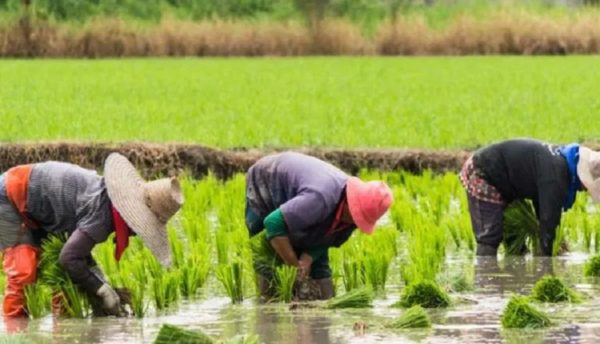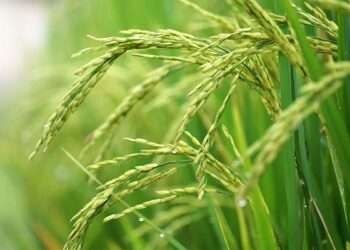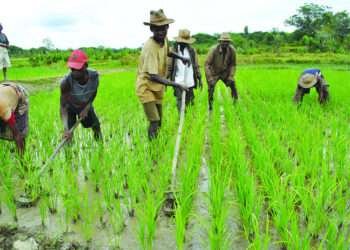The Agricultural Development Bank (ADB), says it will replicate its investment model in the poultry industry for rice production to reduce financial challenges in the sector.
In 2019, Ghana’s rice farmers faced challenges that resulted in late harvest due to the inability of ricer millers.
At the early stages of this year, some rice farmers called on the government to build the capacity of players in the local rice value chain to boost production as Ghana risks a shortage of some agric produce particularly rice by the latter part of this year and into 2021.
According to the agriculture-focused bank, it will use the investment model for poultry farmers to tackle the challenges facing rice farmers.
Although ADB is yet to announce exactly how much it will make available in the local rice value chain unlike the GH¢500 million cedis it has announced for the poultry sector, Managing Director of ADB, Dr. John Kofi Mensah says investment in the rice sector will be more than what has been reserved for poultry due to the multiple processes involved in rice production.
“In the rice value chain, Ghana has the capacity to be self-sufficient in rice production. The value chain has three key segments: the production, that is the growing of the rice. We have the milling and the marketing. Marketing covers those who import, and we are importing a whole lot of rice as I mentioned. The problem with rice production is the gap between the primary production of rice and the milling,” he said.
Dr. Mensah is hopeful the model may shift the mindset of importers to also invest in local rice production if the price is reduced, and the risk of defaulting in payment also minimized.
“Those who deal in importation of rice have strong balance sheets, meaning they have the funding. But when it comes to millers, they are underfunded. When there is under-funding at the milling stage, it means that producers of rice might run into the risk of making losses. Production of paddy rice requires some time dimension in terms of the milling. Once time is going moisture content can become a problem and it will affect the quality of the final product, which is the rice. So ADB with this module is going to finance the gap that exists between the growers of rice production and the milling,” he added.
Rice production in Ghana
Rice is one of the four main cereals produced and consumed in Ghana alongside maize, millet and sorghum. Currently, Ghana’s milling capacity stands at 400,000 metric tonnes.
Aside from this, importation of rice is over 331 million dollars annually, a development many stakeholders believe to have a negative impact on the economy.
Though it is a major staple food and ranked the second-largest caloric food consumed after maize, many believe that efforts made in the past to resolve the rice importation problem have failed to produce the desired results.
While some local rice farmers are asking the government to get them a ready market for their produce, some others are making a difference in food production despite the many challenges they face.
Ghana has over 125,000 hectares of land under rice cultivation, but rice is imported to augment local production (of milled rice) from Pakistan, Korea, India, Thailand, Japan, China, Vietnam and the United States. This has been blamed on the fact that local rice cultivation does not meet local demand.
Later last year, during the 2019 festive season in December, there was a campaign on the consumption of locally produced rice. But the country is yet to see a facelift in the campaign.





















